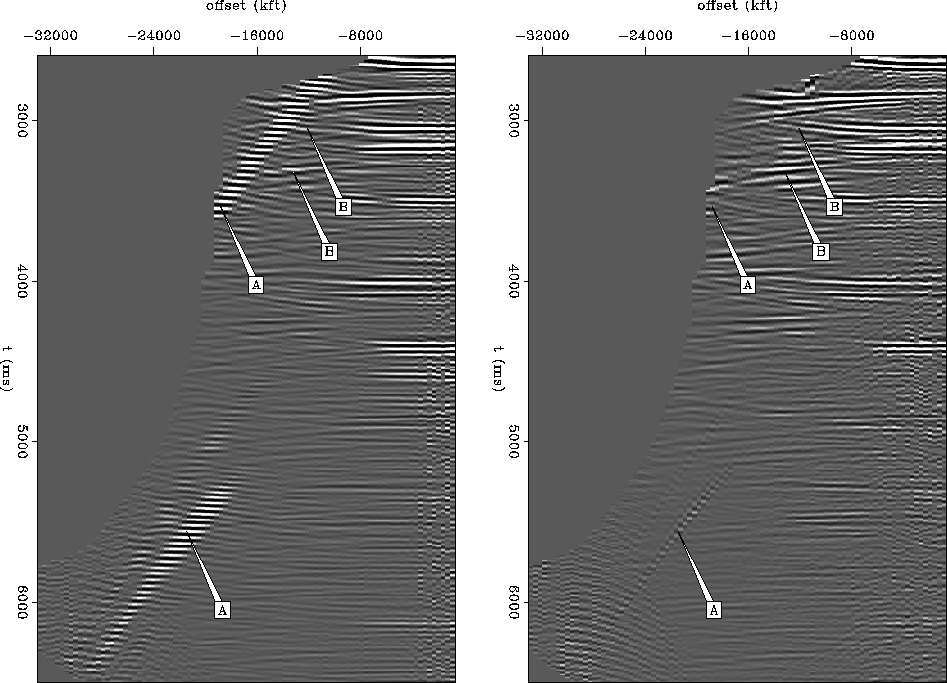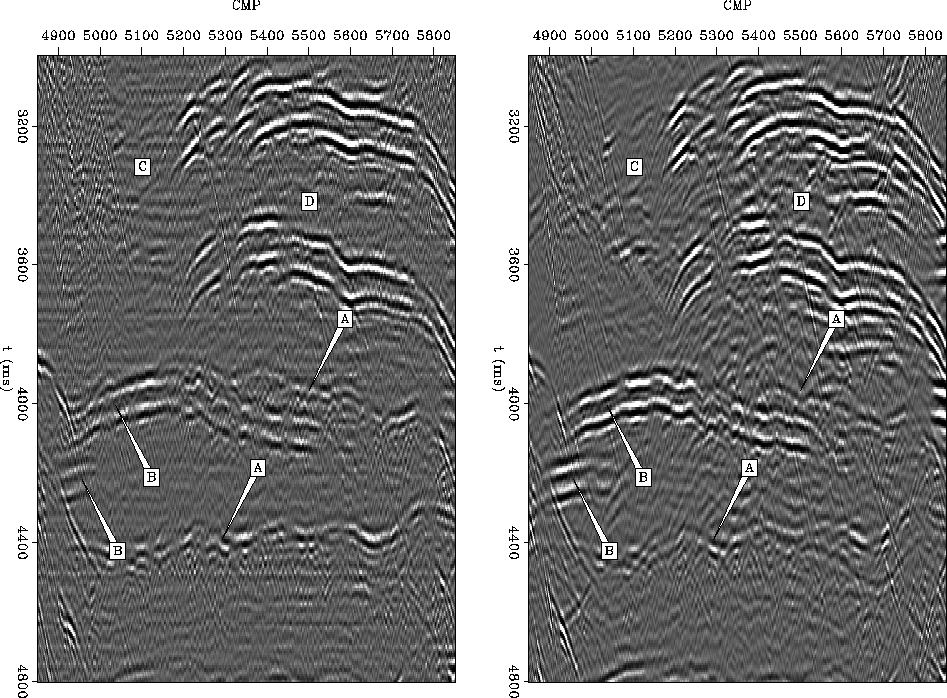




Next: About this document ...
Up: Crawley: Interpolation
Previous: ACKNOWLEDGEMENTS
- Abma, R., and Claerbout, J., 1995, Lateral prediction for noise attenuation by t-x and f-x technique s: Geophysics, 60, no. 6, 1887-1896.
-
- Claerbout, J. F., 1992, Earth Soundings Analysis: Processing Versus Inversion: Blackwell Scientific Publications.
-
- Marfurt, K. J., Schneider, R. V., and Mueller, M. C., 1996, Pitfalls of using conventional and discrete radon transforms on poorly sampled data: Geophysics, 61, no. 5, 1467-1488.
-
- Spitz, S., 1991, Seismic trace interpolation in the f-x domain: Geophysics, 56, no. 6, 785-794.
-
compCmp
Figure 6 Portions of CMP gathers after radon demultiple. Left shows decimated CMP gather. Right side shows reinterpolated CMP gather, with interpolated traces thrown out after radon demultiple. Note that in the left panel aliased multiples at far offset are not well suppressed (A), and that some interesting energy in the mostly primary region around 3 seconds is attenuated (B).




 compStack
compStack
Figure 7 Subsalt portion of stacked section. The left panel shows decimated data after demultiple and stack, the right panel shows same data after interpolation and stack. Multiples (A) are arguably better attenuated in the interpolated data. The decimated data shows attenuated primary events (B), and layer-like artifacts (C).










Next: About this document ...
Up: Crawley: Interpolation
Previous: ACKNOWLEDGEMENTS
Stanford Exploration Project
7/5/1998

